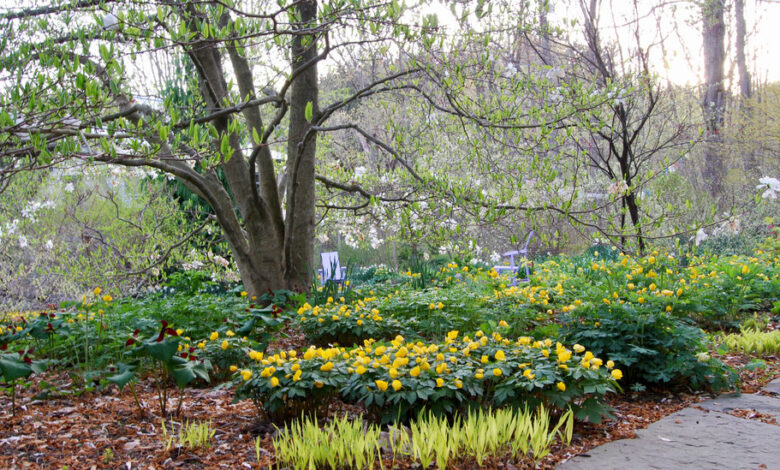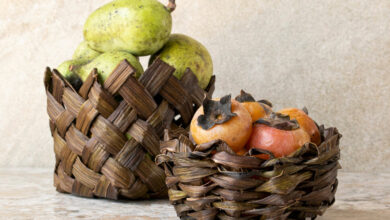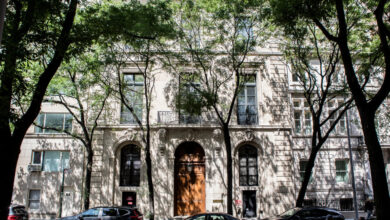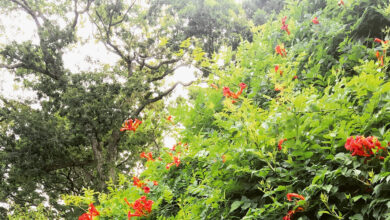Visiting a Garden Center This Spring? Be Strategic.

[ad_1]
Proceed at your own risk — and please, bring a list. That’s my best advice for spring visits to the garden center.
Do not misunderstand: I am all in on shopping for plants anytime, just not on making buying decisions based on the giddy madness of pure impulse.
Instead, consider strategically delayed gratification, which probably means skipping the showiest of-the-moment plants in favor of those that might not be in peak form yet, or even have fully awakened.
On the ride home from such a well-tempered shopping expedition, the car won’t be stuffed with color. But in its aftermath, the garden will be — and at less expected times, when it may otherwise be lacking. I admit to pacifying myself with a flat of violas on the passenger seat (oh, the scent). But as for the springtime perennials and shrubs, I mostly leave them behind.
Smart merchandising means the nursery staff will have stocked up heavily on spring plants and staged the showiest stuff up front, where its powers of seduction will be strongest.
“While there are no hard stats that I have seen,” said Chris Beytes, the editor of the greenhouse trade magazine “GrowerTalks” and the companion “Acres Online” newsletter, “most garden centers I talk to will throw out the 80-20 rule: that 80 percent of their business is done in what the industry affectionately calls ‘the 100 days of hell.’”
Understandably, he said, “they want to maximize that excitement when people come into their stores, and fill them with what will most appeal right then.”
The peak period: Valentine’s Day to Mother’s Day in the warmer zones; March into May a bit farther north; and April, May and the first half of June in the states where spring starts latest.
In other words, everywhere at the moment.
Combine that marketing savvy with the reality that many customers shop only once a year — now — and it’s no wonder our landscapes tend to be spring-heavy.
Showing restraint in that sea of early bloomers is never easy. This spring and last, it has been especially challenging, as an additional impulse-fueling factor has been at work.
“In this pandemic time,” Mr. Beytes said, “there is the worry that if you don’t buy it, you might not get it a week or a year from now. And there are, in some cases, shortages, since growers can only produce so many of something. There is some of the you’d-better-buy-it-now thinking at work, on top of the usual spring excitement.”
Uh-oh. Ready to take a deep breath and adopt at least a semi-strategic approach?
Before You Go, Look Out the Window
One of the most creative gardeners I know was visiting many years ago, and after a day outside puttering together, we had come inside to make supper. He was at the stove stirring something, and I was at the counter beside him, chopping — both of us facing a window that looked out at the top of the driveway.
“Do you enjoy the view of your car doors?” he asked in characteristic deadpan, never missing a beat with the wooden spoon. It wasn’t exactly impolite, but there was no room for misunderstanding.
The next morning, we hatched a plan with a local excavator to shorten the driveway, ending it just below the house, and extend a stone walkway in its place. That changed everything: The view out the kitchen window is now of a shapely magnolia and a succession of herbaceous treasures beneath it. Much better.
My friend had reminded me that a big part of our enjoyment of the garden is from the inside out. The following day, we spent time looking out each key window for subtler fixes — to the views from the desk, the dining table and the like. He helped me imagine which plants could bring better views to life.
Maybe a gold-leaved tree or a large shrub planted in a distant spot would draw the eye, creating a sense of openness, he suggested, with some gold perennials and shrubs punctuating the sightline leading to that beacon. Could a favorite color be used more emphatically, by repeating it in various layers (perennial, shrub, vine, tree) and in different months, making it a signature of the garden? And would some existing element be better if it were bulked up? Perhaps multiples would add to its impact and lend visual continuity.
Plants that solve such issues — those that can create or enhance key axial views in each season, extending the garden well beyond spring — are the ones that go on my shopping list.
What’s on the List
Try another simple assignment: Write down what you look forward to in the garden during each month of the year, whether it’s flowers, foliage or some structural effect.
The Asian pear espaliered on the back of my house shows up several times in my calendar exercise, as beautiful as a leafless sculpture in winter, its arms outstretched, as it is in spring flower, summer foliage or fall fruit.
Are there some blanks on your calendar, maybe at the earliest and latest points in the year? Fill them.
This stretching-the-season approach is not just aesthetic, but also key to ecologically minded designs incorporating native plants. It provides insects and, in turn, other creatures with what they need over an extended period — a sequence of pollen, nectar, fruits and seeds — starting with February’s first pollen-covered pussy willows (Salix) in my Northeastern garden.
A backbone late-season element of my bird-focused plantings, the fall-fruiting, lipid-rich winterberry holly (Ilex verticillata), fuels some birds’ migration and sustains others who stay behind. But the winterberries you see at the garden center now may look like little more than a nursery pot of sticks and tiny leaves, as will powerful late-season native perennials like asters and goldenrods.
They might be the plants you need, but they won’t be the first thing to catch your eye.
“What’s in bloom will be up front, along with the roses and hydrangeas everyone is asking for,” Mr. Beytes said. “At the good garden centers, all the other stuff is there, too — but maybe in the back hoophouse. Ask.”
Think ‘Early, Middle, Late’
Inquire at the counter: Where are the plants that looked good from February to March, like those pussy willows or the hybrid witch-hazels (Hamamelis x intermedia)? And what about those that will look good come November?
Extra-early and extra-late things top my list. So do year-round performers; conifers and other evergreens are the most obvious examples.
Conventional bulb-shopping wisdom suggests that we think about “early, middle, late” within each genus when we’re browsing the catalogs. It’s smarter to order a sequence of varieties that bloom at different moments, the reasoning goes, so that we get a succession of eight to 10 weeks of, say, Narcissus, versus a mere two or three weeks from just a couple of varieties.
Apply that idea of a prolonged show to every sought-after effect, visual or otherwise — from your potential signature color to the possibility of having fragrance over many months, and even to fall foliage, if turning up the heat on the far end of the season is a goal.
In my garden, some sumacs may start to turn as September arrives, while other natives like blueberries (Vaccinium, which pollinators and birds appreciate) remain fiery into November, as spicebush (Lindera benzoin) continues beaming its vivid yellow.
Soil moisture and temperature patterns shift the precise timing and intensity year to year, but you get the idea: Even what is traditionally considered fall foliage season can be extended with advance research.
Visiting the garden center and local public gardens in quieter months — especially those when your garden is lacking — can provide ideas.
Bare-Root Edibles and Bulk Mulch
The least showy stars of early shopping may be the edible ones, like asparagus, that are often sold bare-root. Last April, I renovated my 30-year-old asparagus bed with new bare-root crowns. Rhubarb and strawberries, raspberries and blackberries are often sold this way, as well. (Mail-order vendors may still have inventory, if your garden center is out of stock.)
There will be no crop to savor this year from any of them, however, speaking of delayed botanical gratification. But see if the garden center has seed potatoes, and you can look forward to homegrown new potatoes around the Fourth of July.
And don’t forget the mulch. A brisk spring business is done in bagged mulch, but many nurseries also offer bulk delivery by the cubic yard — similar material, minus the nasty plastic bags — or can steer you to a provider who does.
Remember your assignment: When you arrive at the parking lot, divert your gaze from all that glory and shop with intention.
Of course, careful shopping — or even planting — doth not a garden make. This spring, I’m on a weeding rampage against garlic mustard (Alliaria petiolata). I’m also continuing the removal of some thuggish ground covers I planted years ago, a task I set as one of my New Year’s garden resolutions.
In both cases, as I pull and dig, I try a little positive reinforcement: I remind myself that I’m making room for a few strategically chosen adoptees.
Margaret Roach is creator of the website and podcast A Way to Garden, and a book of the same name.
For weekly email updates on residential real estate news, sign up here. Follow us on Twitter: @nytrealestate.
[ad_2]
Source link






